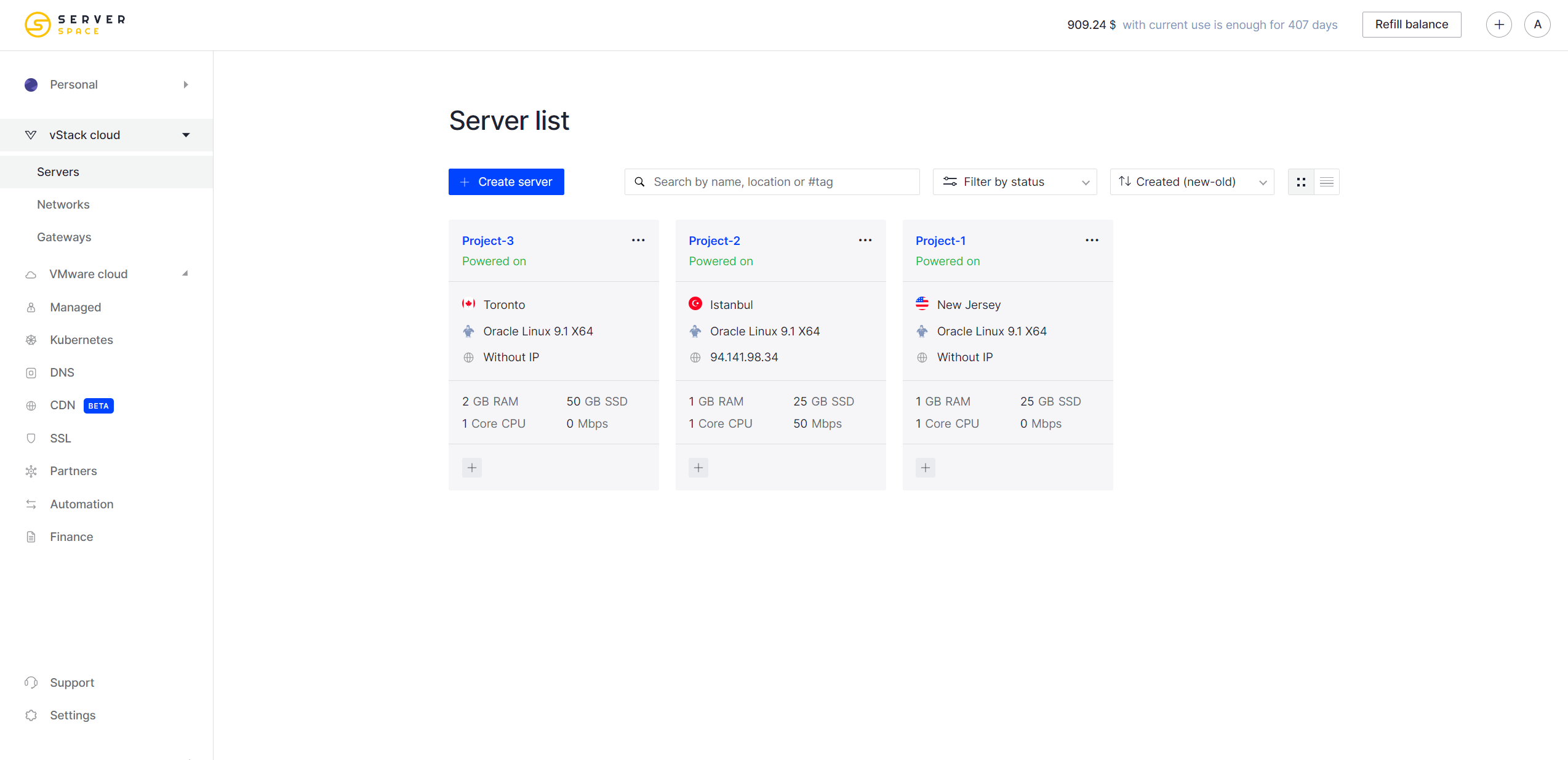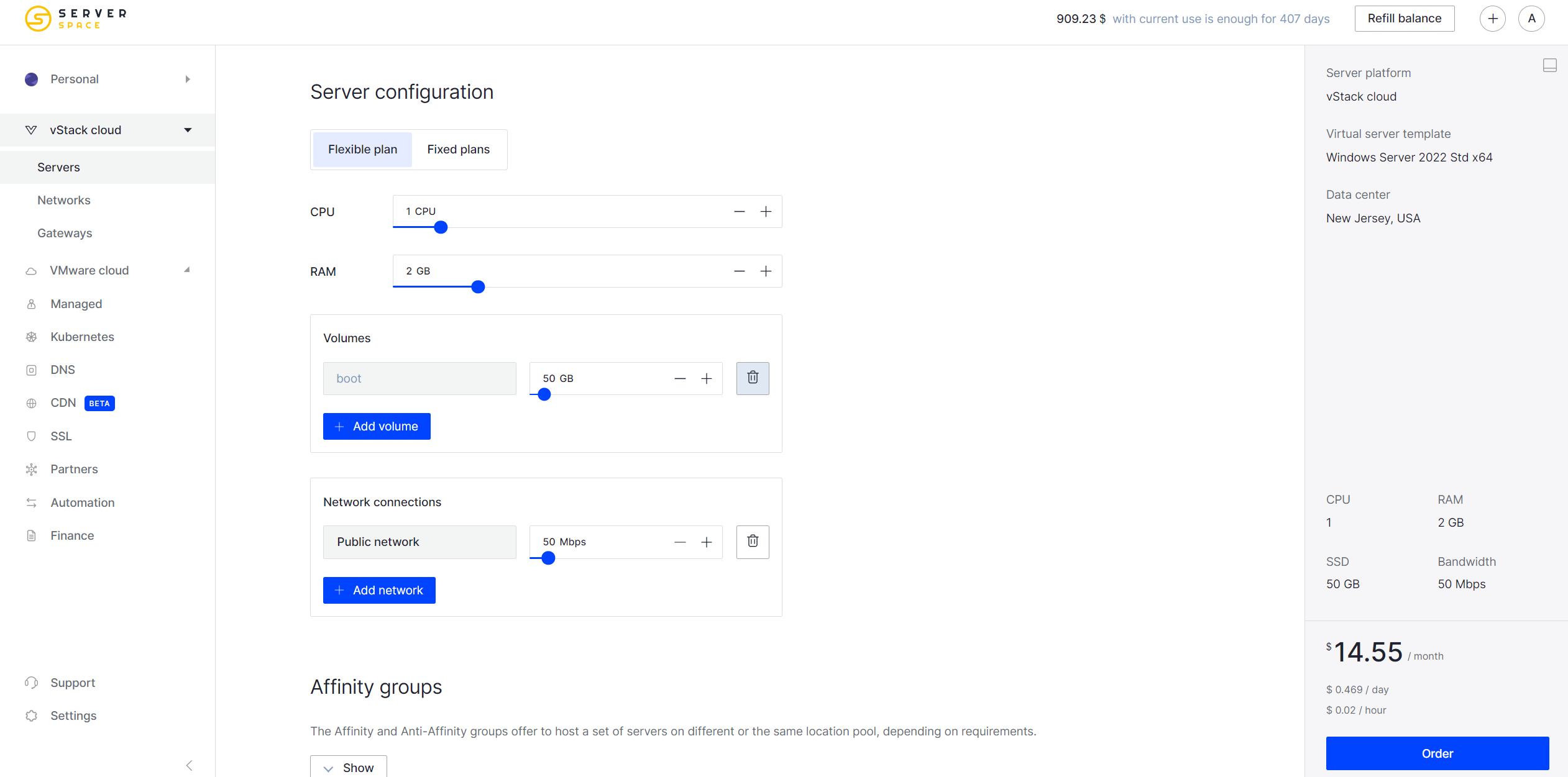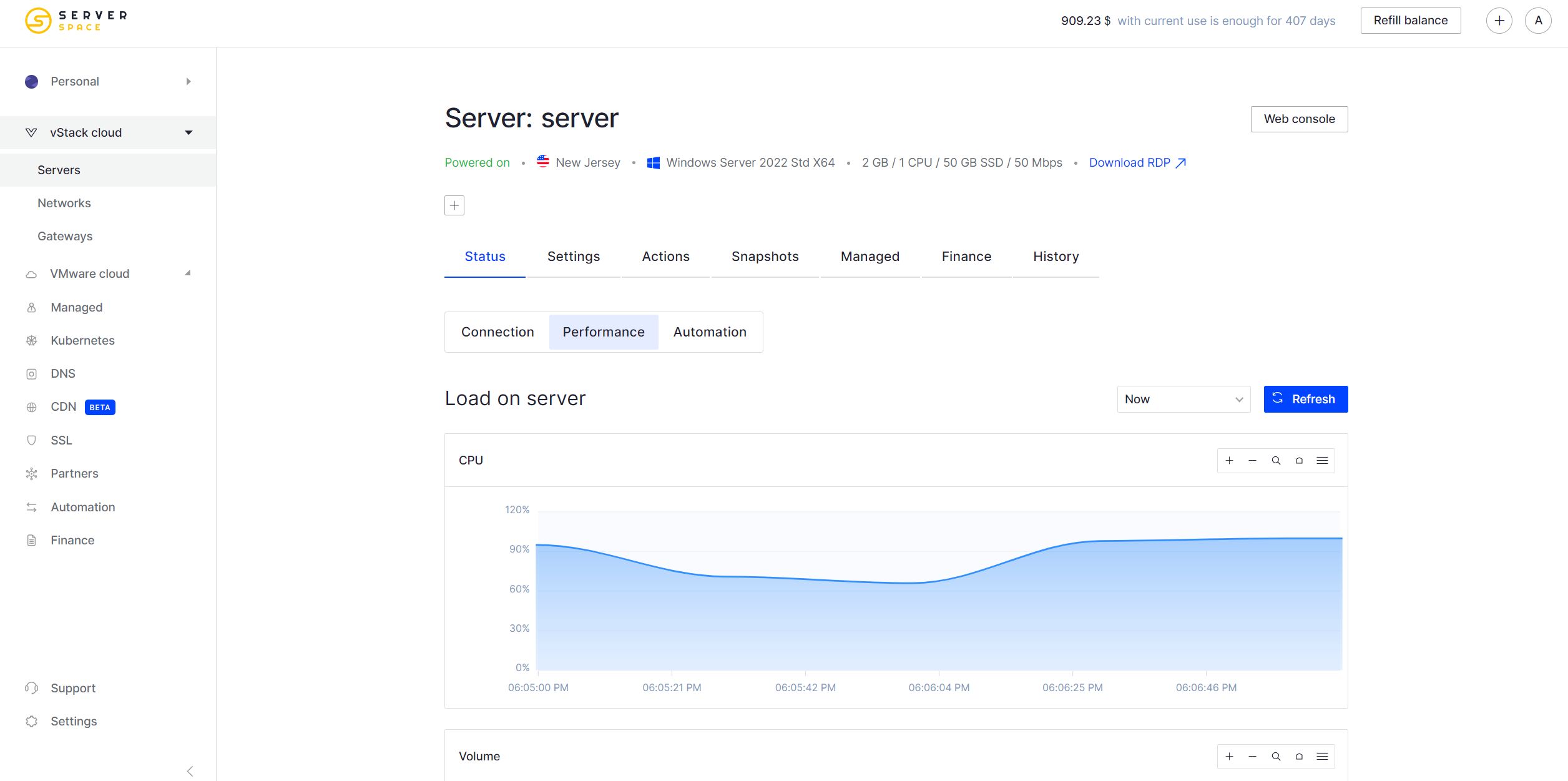
User-friendly interface
Our control panel has the necessary tools to monitor the state of your infrastructure and comfortably manage your application. Any problem is solved within the panel through the ticketing system.
Set up a LAMP server stack to power dynamic websites and web applications efficiently.
You are not tied to rates and can rent any cloud server configuration.
Spin up your LAMP servers in 40 sec, without long setups and boring docs to read.
Service charges every 10 minutes. You pay only for the servers you use.
Run your servers globally. We have low latency and high availability network.
Explore Serverspace opportunities to grow your business.
Our control panel has the necessary tools to monitor the state of your infrastructure and comfortably manage your application. Any problem is solved within the panel through the ticketing system.
Set up your LAMP server configuration in the handy Serverspace control panel. If the default configuration does not suit you, you can customize the resources to your own needs.
Estimate costs for a project with Serverspace pricing system. Funds are charged once in every 10 minutes, allowing you to pay for servers only for their lifetime.
Get access to one of the most popular web service stacks.
Get a guarantee of protection for your project with encryption methods, regular updates, and stack security architecture.
Customize additional modules and use open-source frameworks that reduce the time it takes to write code.
Deploy a cloud server for resources of any size. Run an additional LAMP server under increased load.
Use all LAMP features to develop your project.
LAMP is a popular open-source software stack used to build and host dynamic websites and web applications. The acronym stands for:
Together, these components work seamlessly to deliver web content. Linux provides the stable foundation, Apache handles incoming web requests, MySQL manages data storage and retrieval, and PHP processes dynamic content and interacts with the database. This combination creates a flexible, reliable environment for running a wide variety of web applications.
LAMP stands for Linux, Apache, MySQL, PHP. It uses the Apache web server to serve web content.
LEMP stands for Linux, Nginx (pronounced "Engine-X"), MySQL, PHP. It uses Nginx as the web server instead of Apache.
The key differences betweeen the two stacks are the following:
Both stacks are popular for hosting dynamic websites and applications, and the choice depends on your specific needs and preferences.
A description of how to install LAMP stack on virtual servers with Ubuntu operating system can be found in this tutorial.
LAMP handles dynamic content through the interaction of its components, primarily using PHP and MySQL:
This process allows LAMP to deliver personalized, interactive, and data-driven web pages rather than just static content.

